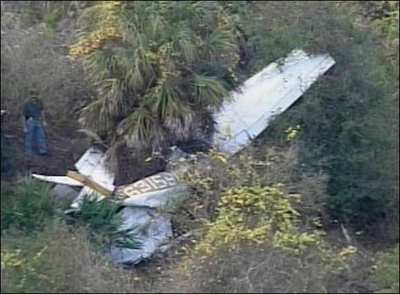Board Says It Sees The Same Issues While Investigating GA Accidents 'Time After Time'
Aviation issues make up only two of the ten items on the NTSB's 'Most Wanted' list, released by the Board Wednesday, but Airport Surface Operation Safety captured the number one spot on the list. "We're releasing the list now so it is available to policymakers at the state and federal levels as well as industry groups as they craft their priorities for 2013," NTSB Chair Deborah A.P. Hersman said. "We want to highlight the results of our investigations and ensure that safety has a seat at the table when decisions are made."

According to the report, some of the deadliest accidents involving airplanes have occurred not in the air, but on the runway. In 1977, 583 people were killed when two jumbo jets collided on a runway in the Canary Islands. The deadliest U.S. runway incursion accident involving two aircraft was a collision between a USAir 737 and a Skywest Metroliner commuter airplane at Los Angeles International Airport in February 1991, which killed 34 people. In December 2005, a pilot unfamiliar with the braking system ran off the runway during landing at Chicago's Midway airport and collided with a car. In August 2006, 49 people were killed in Lexington, Kentucky, when a pilot used the wrong runway for takeoff. In December 2008, an airplane departed the side of the runway at Denver International Airport during takeoff when the captain failed to compensate for a strong and gusty crosswind. A postcrash fire ensued, resulting in serious injuries to 6 and minor injuries to 41 crew and passengers. The risk of similar
catastrophes remains today.
The board says that to make better decisions during takeoff and landing, pilots require better resources to improve their situational awareness. Ground movement safety systems, such as cockpit moving map displays that provide a timely warning to flight crews to prevent runway incursions, are just one potential solution. Another is a system of cross-checking the airplane's location at the assigned runway before preparing for takeoff. New technology—such as runway status lights and enhanced final approach runway occupancy signals—can provide a direct warning capability to the cockpit, thereby eliminating the delay in warning the pilots by relaying it through an air traffic controller. Pilot training is also critical to a pilot's success on the airport surface. Flight simulator training programs should include realistic conditions, such as gusty crosswinds, to prepare pilots for actual conditions before they experience them.

On the subject of GA, the Board said it continues to investigate about 1,500 accidents each year in general aviation. In many cases, pilots did not have the adequate knowledge, skills, or recurrent training to fly safely, particularly in questionable weather conditions. In addition, the more sophisticated "glass" cockpit displays present a new layer of complications for general aviation pilots. And not only are pilots dying due to human error and inadequate training, but also they are frequently transporting their families who suffer the same tragic fate.
The NTSB says it sees similar accident circumstances time after time. Adequate education and training and screening for risky behavior are critical to improving general aviation safety. For example, guidance materials should include information on the use of Internet, satellite, and other data sources for obtaining weather information. Training materials should include elements on electronic primary flight displays, and pilots should have access to flight simulators that provide equipment-specific electronic avionics displays. Knowledge tests and flight reviews should test for awareness of weather, use of instruments, and use of "glass" cockpits. And there should be a mechanism for identifying at-risk pilots and addressing risks so that both the pilot and passengers can safely fly.
Human error in general aviation accidents is not solely a pilot problem. Aircraft maintenance workers should also be required to undergo recurrent training to keep them up to date with the best practices for inspecting and maintaining electrical systems, circuit breakers, and aged wiring.
(Cessna 150 accident file photo)
 ANN's Daily Aero-Linx (04.15.24)
ANN's Daily Aero-Linx (04.15.24) Classic Aero-TV: 'No Other Options' -- The Israeli Air Force's Danny Shapira
Classic Aero-TV: 'No Other Options' -- The Israeli Air Force's Danny Shapira Aero-News: Quote of the Day (04.15.24)
Aero-News: Quote of the Day (04.15.24) Airborne 04.16.24: RV Update, Affordable Flying Expo, Diamond Lil
Airborne 04.16.24: RV Update, Affordable Flying Expo, Diamond Lil ANN's Daily Aero-Term (04.16.24): Chart Supplement US
ANN's Daily Aero-Term (04.16.24): Chart Supplement US




